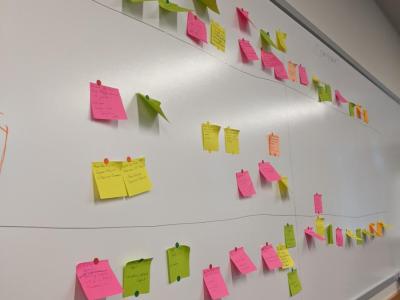
June 20, 2022 — What is the future of freight? That is the question we’re aiming to answer over the next year in our new Urban Freight Lab project, Urban Freight in 2030.
As part of the project, we’ve launched a new blog series on “The Future of Delivery: Urban Freight in 2030“, where we will explore emerging trends in urban freight transportation, discuss impacts on local and global sustainable development, and share our collective vision for the future of urban freight over the next eight years and beyond.
There are many questions about what’s to come in the urban freight space. We’ll tap into the expertise of our industry members (private sector representatives from shipping, technology, manufacturing, real estate, and retail), our public sector partners, and our own subject matter experts to create a shared vision of the future of urban freight.
Our first blog post covers the metrics we’ll use to quantify progress toward our collective vision of the future of freight: emissions, congestion, roadway fatalities, protected space for vulnerable users, cost of delivery per package, and equity (access to goods and services and environmental justice).
MORE:
The newest post: Urban Freight in 2030: What Will We Measure?
About the project: Urban Freight in 2030
Read more:
About the Urban Freight Lab (UFL): The Urban Freight Lab is a structured partnership of academic researchers, public sector agencies, and private sector firms — shippers, retailers, tech providers, property owners, and manufacturers — working collaboratively to identify complex urban freight management problems and design solutions to make industry more efficient and cities more sustainable and livable.